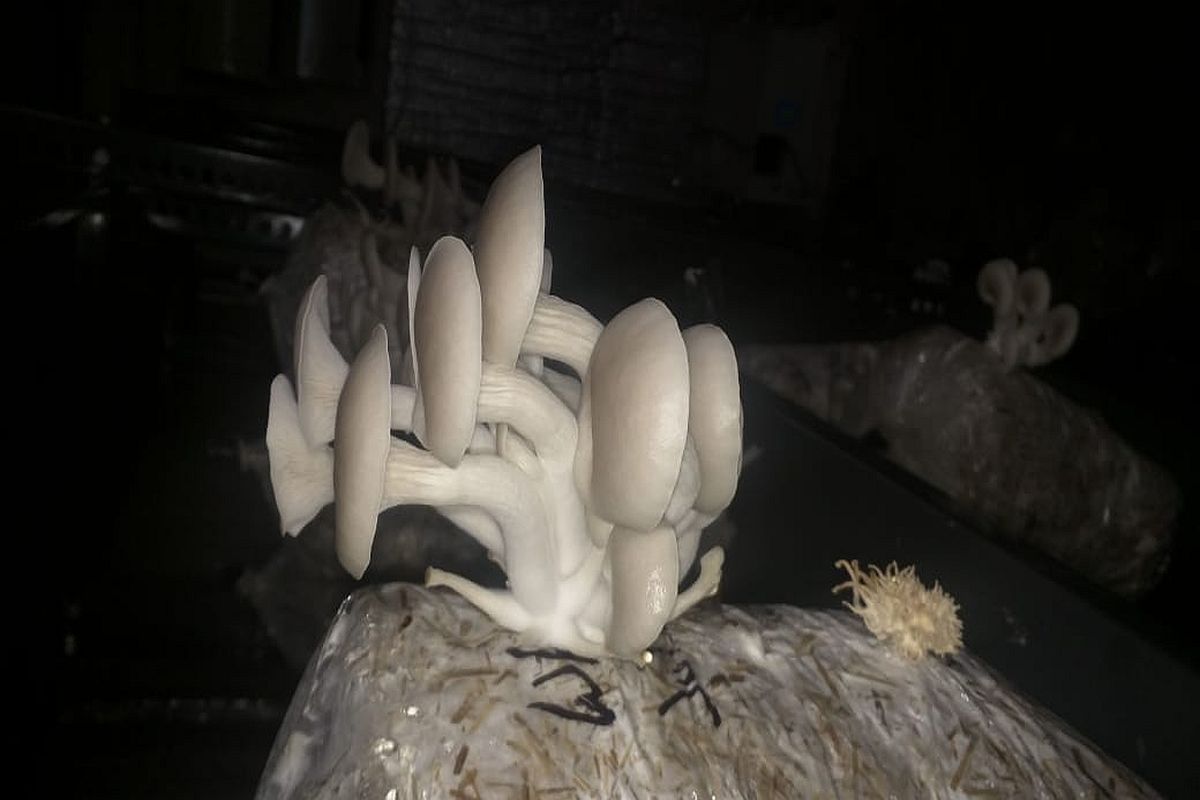Prod from govt, educated youth opt for horticulture
Pranab Kumar Mallick runs a brisk business of bonsai plantations on his three and a half bigha of land at his village in the Joypur area of Howrah district.
The distant land of Spiti valley, the abode of ‘lamas’ (monks) and also an attraction for tourists from around the globe for its age old Buddhists monasteries.

Oyster mushroom (Dhingri). (Photo: SNS)
The cultivation of Oyster mushroom (Dhingri) is all set to strengthen the economy of farmers in the tribal belt of Lahaul and Spiti in Himachal Pradesh.
The distant land of Spiti valley, the abode of ‘lamas’ (monks) and also an attraction for tourists from around the globe for its age old Buddhists monasteries and scenic splendour, is now ready to make its mark in production and supply of the Oyster Mushroom to other parts of the country.
The farmers of Spiti, who cultivate peas as their main cash crop, are now being extended the technique to grow the spatula shaped mushroom by subject matter specialists of horticulture department, shared Kalzag Ladde of Chichim village in Spiti, who has been growing Dhingri since 2015.
Advertisement
Ladde is producing more than 150 kilograms of oyster mushroom and had been supplying the same to local hoteliers and Home Stays in Kaza at a rate of Rs 250 to Rs 300 per kg to be served as a notable cuisine on a platter.
Dhingri is botanically referred to as ‘Pleurotus ostreatus’.
As of now 50 farmers have been given training for growing the oyster mushroom and have been distributed spawned bags of the ‘Dhingri’ mushroom to be incubated under room temperature.
Once produced in abundance, the mushroom can be utilized for pickles, mushroom powder, for medicines etc, and also providing direct source of employment to the women folk at their doorsteps.
The oyster mushroom is one of the most suitable fungal organisms for producing protein rich food from various agro-wastes without composting having medicinal value as well.
It is quite rich in vitamin C and B complex with protein contents varying between 1.6 to 2.5%. It has most of the mineral salts required by the human body such as potassium, sodium, phosphorus, iron and calcium.
It also has antibiotic properties, reduces the bad cholesterol and is suitable for sugar patients as well.
The Oyster mushroom is grown in subtropical mountain regions with temperature ranging from 10 to 24 degree centigrade and relative humidity between 55-75%, for a period of 6 to 8 months in a year. The clean dry paddy straw is soaked in water for 18 hours or so and mixed with a bottle of master spawn along with horse gram powder.
The mixture is filled into polyethylene bags and kept at room temperature.
The compact mass is watered regularly until the mushroom start growing all over.
Advertisement